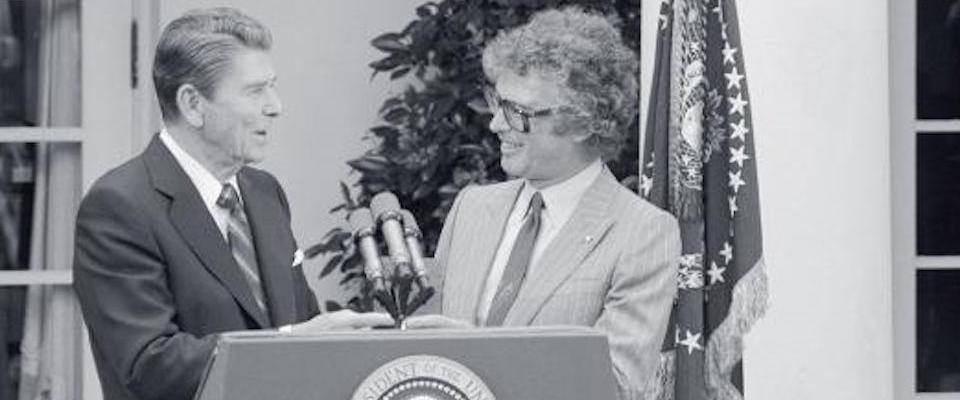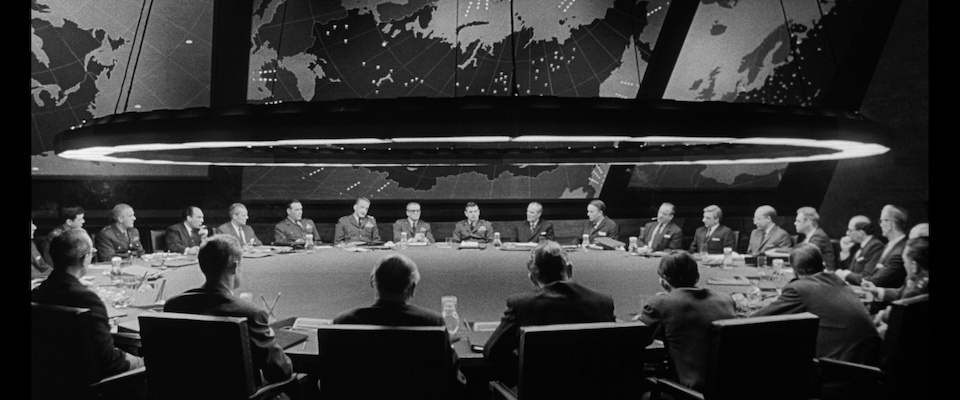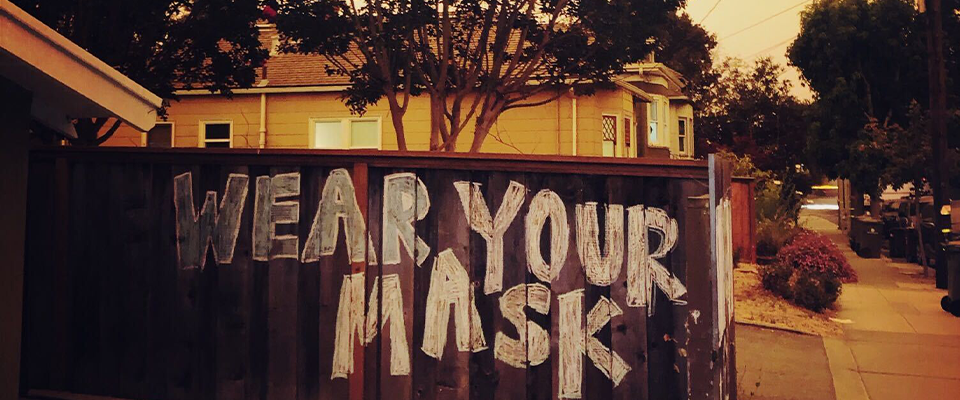It was not the most provocative speech in Berkeley’s history, but Kenneth Taylor’s 1980 Charter Day address is remembered for its reception. The former Canadian ambassador to Iran had just left that post, after helping six U.S. diplomats escape the fate of 52 other Americans being held hostage by student revolutionaries.
The taking of the U.S. embassy had been both a culmination of anti-American feeling in Iran—the CIA had helped keep the Shah in power and supported his brutal regime—and the beginning of a new dynamic in U.S.-Middle East relations: Ayatollah in, Jimmy Carter out. It also marked the beginning of anti-Iran feelings in the U.S.
So while Taylor was being hailed as a hero in the rest of the United States, Berkeley police were expecting protests from Iranian students and their supporters, as well as counterprotests, at Charter Day. Rather than cancel his address, the authorities decided to give the Berkeley alum a bulletproof vest to wear under his gown, as well as a phalanx of bodyguards similarly attired. Putting on the body armor beneath their garb, one of the cops announced, “I only graduated from high school and now I’m a full university professor!”
No shots were fired during the ceremonies, Taylor says today, although “halfway through the thing people started burning flags—U.S. flags, Iranian flags. I figured the best thing to do was to keep on talking. Nobody cared what I was saying anyway.”
Such self-deprecation is the norm for the foreign-service veteran who during the early months of the crisis found himself in what he has described as a “Walter Mitty world.” As someone who was both a Canadian diplomat and a spy for the United States, he believes his role in the escape of the six is underplayed in Argo, Ben Affleck’s slightly fictionalized film version of the CIA’s contribution. But after a highly publicized meeting with the director-star (and a rewrite of the movie’s final postscript), the dapper Canadian is, well, diplomatic.

“I think you can get further by talking about it, citing the role of the Canadians without embarrassing the CIA,” he says.
I met with Taylor at his apartment building in New York a week before Argo‘s release in October. Most of the controversy about the film had died down and he seemed to be apologizing for being impolitic with the press in previous weeks. This was after the film’s debut at the Toronto International Film Festival but before Affleck had flown Taylor and his wife, Pat (who was with him in Iran), to Hollywood for a private screening. After some scathing publicity in Canada (sample headline in Maclean’s: “Ben Affleck Rewrites History”), Taylor got a phone call.
“Hello, Mr. Ambassador? It’s Ben.”
Taylor, who met me in the lobby wearing a bespoke suit sans tie, has no hard feelings. “Ben Affleck is a very affable guy. We got along just fine, despite the fact that the CIA was a very minor player [in the rescue depicted in the film] and, according to the movie, we were incidental.”
In one sense, everyone ensnared in the drama of post-revolutionary Iran was incidental—the Americans who were held hostage in Tehran for 444 days, the half-dozen Americans the Canadians helped escape, even the Canadian contingent itself. Taylor had come to Iran in 1977, at a time when it was considered a plum appointment. Business between Canada and Iran was booming, thanks to what he calls “the mutuality of oil interests”; the discos were open all night; the Shah was still in power. “Iranians love to entertain,” says Taylor, and he and his wife were no slouches, either. He also liked to dance; when he served in his last diplomatic post in New York in the ’80s, he was sometimes called “the ambassador to Regine’s” (the hot disco establishment).
“There were any number of attractions,” he says now, “and I didn’t meet anybody who saw it coming. People who had been there for years—journalists, bankers, diplomats, Iranians—I couldn’t find anybody who said, ‘Be careful: Two years from now the Shah is going to be deposed.'”
Kenneth Taylor didn’t set out to be a diplomat. After getting a general arts degree at the University of Toronto, the Calgary native went to Berkeley to get an MBA and had what he describes as “a marvelous two years…. It was an open campus; what best illustrated that is that there were two booths near Sather Gate, one pro-Batista, one pro-Castro. Take your choice!”
Taylor was under the influence of a different kind of emotion: At Berkeley he met Pat, a fourth-generation Chinese-Australian microbiologist who was completing her doctorate while working as an associate in the School of Public Health. That’s when she wasn’t dancing with the Oakland Light Opera Ballet Company or playing violin with the University Symphony Orchestra. “I always thought there were three or four of her,” says her husband. The two were married at the Anglican Church near their old home at the International House (which will award them I-House Alumni Couple of the Year at its spring 2013 gala), shortly after Taylor got his first Canadian government post to Guatemala.
“In those days there was no democracy in the foreign service,” says Taylor. “Today you’d get a list of posts, put your preferences, they’d talk to the ambassador. In 1959 you went where you were told.”
Even his choice of career was rather accidental. “I wanted to work internationally and there weren’t many jobs available,” Taylor recalls. Those were tumultuous times in Guatemala—a U.S.-backed coup in 1954 set the stage for the civil war that began in 1960—and the small office there covered all of Central America, so he did get to travel a lot. Pat, meanwhile, was working for the Institute of Nutrition of Central America and Panama there, establishing a pattern that would hold through all of her husband’s posts.
“I had already worked for a decade,” says Dr. Patricia Taylor of her ability to skirt the no-work rule then in effect for spouses. “It didn’t impinge on my responsibilities as Ken’s wife. I think they felt it wouldn’t allow me enough time to entertain.”
After Guatemala, Taylor went where they sent him. Detroit (where their son Douglas was born in 1964) and Karachi were not on many people’s must-visit lists, but Taylor managed to keep his sense of humor at each post. When he was informed of his post in Pakistan, he was told he would be in charge of the whole office—which turned out to be true. Almost upon his arrival, everyone else stationed there was moved to Islamabad, leaving Taylor alone. “I reported to myself,” he says. “I told my friends in Ottawa, ‘I’ve got a big responsibility. I have an organization chart that goes in circles.'”
After a detour to swinging London in 1967 (“Carnaby Street, Twiggy, the Beatles, the Rolling Stones—we had a great time”), the Taylors returned to Canada. Then came the Iran assignment. “It was quite a phenomenal time,” Ken says. “I was trying to promote Canadian business interest, trying to keep track of the region, trying to cultivate a relationship with the imperial court…. Then, of course, everything fell apart.”
The speed with which things changed in Iran seems stunning, even now in the wake of the Arab Spring. By the beginning of 1979, the Shah had left the country; in February 1979, Ayatollah Khomeini returned from exile. In between the two events, Taylor arranged for the evacuation of 850 Canadians from Iran—”a tremendous feat of organization,” as Canada’s Department of Foreign Affairs later put it. You could call this prescience on Taylor’s part, since there was no immediate threat to his countrymen. As he says today, “Canadians don’t count as symbols. We may have been allies with the U.S., but the U.S. has the power and influence.”
And it was the U.S., as well as Great Britain, that had so influenced events in modern Iranian history—starting with the CIA-sponsored overthrow of the nation’s left-leaning leader Mossadeq in 1953 and followed by support for the Shah in the subsequent decades. By the time America allowed the ailing exile into the country to be treated for cancer in October 1979, anti-U.S. sentiment was uncontainable. When the followers of the Ayatollah Khomeini overran the U.S. embassy on November 4, 1979, it was after months of angry protest.
“I was troubled—well, ‘troubled’ is an understatement,” says Taylor of the invasion. “This was a total breach of diplomatic conventions and, really, diplomatic conventions are far more valuable to a country like Iran, or Canada, than they are to Great Britain. They more or less stand on their own.” He also felt it was a bad move for the Iranian people: “They were going to pay a heavy price for this, which they did.” The country’s isolation has only increased in the years since, with Canada finally closing its embassy there in September 2012 (a move that Taylor opposed).
The six Americans who slipped away from the embassy as 52 others were being captured and blindfolded were lucky: The consulate building they were working in was surrounded but not taken over, and by the time they escaped, it was pouring rain and the street was deserted. Initially they were headed for the British embassy, but in trying to avoid various street demonstrations they ended up in the apartment of one of the six, Robert Anders, a senior officer in the visa department. They spent the next few days moving between temporary hideouts (including the homes of their now-captive co-workers), before Anders called his friend John Sheardown, head of immigration at the Canadian embassy.
“We’ve got lots of room, Bob,” Sheardown said when Anders told him of their predicament. “Bring them along.”
The six spent the following three months dividing their time between Sheardown’s and Taylor’s houses. They played board games (an Iranian version of Monopoly called Persepolis, with leather case and gold pieces, had been a gift to Taylor from the Shah), watched the news, and drank what booze remained, while the Canadians made plans for getting them out of the country undetected.
Flora MacDonald, Canada’s Minister for External Affairs, suggested disguising them as petroleum engineers. She told U.S. Secretary of State Cyrus Vance they would put the houseguests, as they came to be called, “on donkeys and send them across the border” if America didn’t act.
On January 2, 1980, the CIA sent Tony Mendez to Ottawa to help plan the “exfiltration” of the houseguests from Tehran. Mendez (Ben Affleck in Argo) specialized in creating “cover legends” for CIA operatives and sneaking them out of tight situations. The film is based on Mendez’s 1999 book, The Master of Disguise, and a 2007 Wired article by Joshua Bearman.
It was Mendez who came up with the idea of passing the six off as Canadians who’d been in Iran scouting locations for a sci-fi flick. “The thing about Hollywood is that they’re so eccentric, they wouldn’t care what the political situation was,” Mendez told Robert Wright, author of the definitive account of the escape, Our Man in Tehran (2010).
The film Argo‘s focus on the Hollywood Option (as Mendez called his plot) diminished the role of the Canadians.
“We were not innkeepers!” says Taylor. (It can’t help that Victor Garber is a 63-year-old Canadian actor playing a 45-year-old Taylor, who cut a fashionably youthful figure, with long curly hair and oversized glasses.) “We did everything: We provided the passports, the documents, the birth certificates, the credit cards—their identities. Tony had spent time in Hollywood schmoozing with people.
“While we were [with the escapees] three months in Tehran, he comes out for a day and a half and in that time was totally within our cocoon,” Taylor continues. “I was not going to have somebody from Washington come in and say, ‘This is how we’re going to do it.'” (Truth to tell, Mendez presented the houseguests with three cover options—petroleum workers, agricultural nutritionists, and movie scouts—and they felt most comfortable with the latter.)
That a Hollywood film is not historically accurate doesn’t seem like a stop-the-presses moment, and all agree that Argo is true to the tenor of the times. “The early scenes were vivid,” Pat says of the takeover reenactment; she worked just blocks from the U.S. embassy. “It brought me right back to that day.”
But someone at Warner Bros. should have been prepared for Canadians’ hostile reaction to the portrayals of their country’s role in the rescue and of Taylor in particular. The latter oversight seems the most peculiar because upon his return Taylor was hailed as a hero throughout the U.S.
Americans, desperate for some bit of good news as the hostage crisis dragged on for 15 months, unseating President Jimmy Carter in the process, fell at the ambassador’s feet. He was awarded the Congressional Gold Medal (other non-Americans so honored include Winston Churchill and Nelson Mandela) and given the keys to New York City, Los Angeles, San Francisco, Dallas, Las Vegas, and Kansas City. With the blessing of External Affairs, he crisscrossed both countries for six months, speaking at fairs and riding in parades.
His own country made him and Sheardown (and later their wives) Officers of the Order of Canada, and later appointed Taylor Consul General in New York. As his son said in an interview during their year of adulation, “Unless my dad gets three standing ovations a day, he feels sick.”
In 1984, Taylor left the Canadian Foreign Service after almost 25 years. “I was still young enough to think about a so-called second career,” he says, “so I resigned and went with Nabisco Brands, which became RJR Nabisco. Seven years later some of us tried to take the company private, and we lost to [Henry] Kravis.”
That battle, recounted in Bryan Burrough and John Helyar’s Barbarians at the Gate, was a different sort of hostile takeover. “I’ve been through two revolutions, one political and one corporate,” Taylor says. “And there’s a big similarity because nobody can predict the outcome. We thought we were winning and that I would be living in southern France by now.”
Instead, Taylor and his wife live in a high-rise in Manhattan, overlooking the East River. He seems comfortable with the press he’s been getting in the last few weeks. The last time his name was in the news was in the wake of Wright’s book, which candidly discussed his work with the CIA—and not just in getting the six Americans out of Iran. He also helped the agency with the planning of Operation Eagle Claw, the aborted U.S. Delta Force attempt to rescue the 52 Iran hostages.
“With Eagle Claw, we were actually actively involved 10 hours a day setting out tactical moves for the commando raid, under guise of the embassy,” says Taylor. “That’s pretty serious stuff, or would have been seen as serious stuff to the Iranians.”
Although some Canadians did not like the idea of one of their diplomats working with the American CIA, Taylor says he didn’t need a lot of persuading. “They asked me and I said yes. To me—how do I say this without being trite?—it seemed the right and responsible thing to do. The U.S. didn’t have anybody there.
“I was happy with what I attempted to do and would not have done anything otherwise,” he continues. “I didn’t ask if it was a role Canada should play; I just happened to be the person on the spot at the time. When I went to Tehran in 1977, I expected a pretty conventional post.”
Then history got in the way, I suggest.
He laughs. “I stumbled over it!”
Editors’ note: Taylor died in October of 2015, at the age of 81.





















